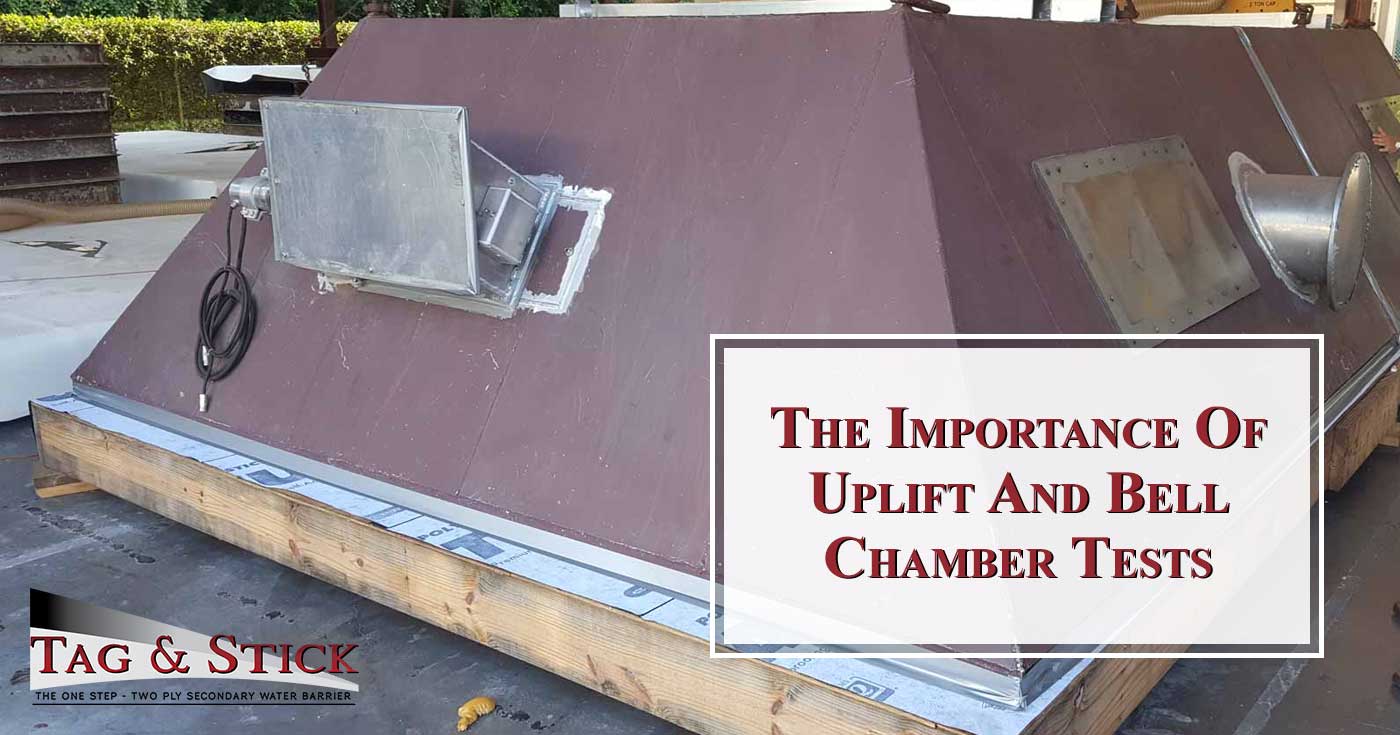The Importance Of Uplift And Bell Chamber Tests

Studies that focused on post-hurricane damage verified that one of the largest contributors to overall monetary loss was roof failure due to strong winds. Uplift tests are typically carried out in high risk hurricane zones (HVHZ). While undergoing construction, it is of paramount importance that the roof is monitored during the installation period. In fact, there are various requirements that need to be obtained during and at the end of the process by a city inspector.
There are many different test protocols that can be used, but they all serve the same purpose: to evaluate and assess the wind uplift resistance of roofing systems. All these tests work in a similar way. One of the tests done to ensure that a roof system will perform as designed is to use pneumatic pressure. Negative uplift pressure is applied in increments to full size roofs that have been installed within a bell chamber until failure is recorded at a prescribed requirement that is in compliance with building codes. The results from these tests will reflect the ability of membrane roof systems against strong winds. Based on test results, designs can then be modified and altered to better resist against gale force winds produced from hurricanes and storms. The breaking point of the roof system gives an indication of how well the roof will hold out in unfavorable conditions.
As you are probably aware, roof underlayment is vitally important in all modern construction. Roof underlayment is designed to mitigate damage from rain and snow driven by harsh winds, providing an additional line of defense against rot and water damage.
What Do These Tests Entail?
When heavy gusts of wind pass over a roof, it creates both positive and negative air pressure which in extreme cases can damage the structural integrity. The underlayment reduces the force experienced on the rest of the roof by absorbing some of the wind load acting on the roofs structure and therefore reducing the potential risk of damage.
Bell Chamber and Bonded Pull Test (TAS-124)
A bell chamber test (for mechanically attached underlayment) procedure is normally performed to ensure that the already existing roof meets the uplift resistance performance requirements under the ACSE 7 in the Florida Building Code. In some cases, this test can be used to ascertain whether or not a newly installed roof was constructed correctly and to the right specifications. For underlayment using adhesive, a fairly similar test (Bonded Pull Test) is used to check the adhesive hasn’t weakened and will still withstand high pressures. A 2×2 panel is glued to the roof and a Com Ten gradually pulls the adhered underlayment upward until adhesive failure or the specified value.
When conducting a bell chamber test, typically a 5×5 vacuum chamber is attached to the roof and the vacuum pressure is raised to a pre-calculated value in line with industry standards, which is 15 pounds of negative pressure per square foot (720 Pa). The deflections in the roof membrane are to be monitored with an analog dial indicator (graduated in units no larger than 0.05mm, and a range of no less than 50mm). After the pressure is applied across the roof section it is to be held for 60 seconds. If the roof holds, add another 15 pounds of pressure per square foot and hold for another minute. Repeat the process until failure or until a pressure is maintained at the design pressure for that particular area of roof that is in accordance with Florida Building Code Standards. Should the roof fail under pressure, record the breaking point time and load applied. Bear in mind that if there is an upward deflection of more than 1 inch in the roof system assembly, it shall be considered a failure.
Uplift Test (TAS-106)
This is a very similar test, but its focal point is on the roof tiling. A direct tensile load is applied by pulling against the tiles adhesive or mechanical attachment to the underlayment to verify is ability to withstand the uplift it is designed for. These are mandatory tests for Florida, in accordance with building guidelines.
Our Product
Tag & Stick roof underlayment system acts as a two-ply water barrier underlayment. It combines both mechanical and adhesive technology, and can be applied to almost any sloped roof that requires an underlayment installed. The most impressive feature of Tag & Stick is its ability to be removed when the structure needs re-roofing – without incurring any damage to the sheathing. This allows it to be easily reinstalled should a roof fail the tests mentioned above at any point in the future, making it a versatile and time saving option.
Should you have any questions regarding our product, feel free to contact our highly professional team at any time! Our product will revolutionize the way roofs are constructed and make it much simpler for your buildings.